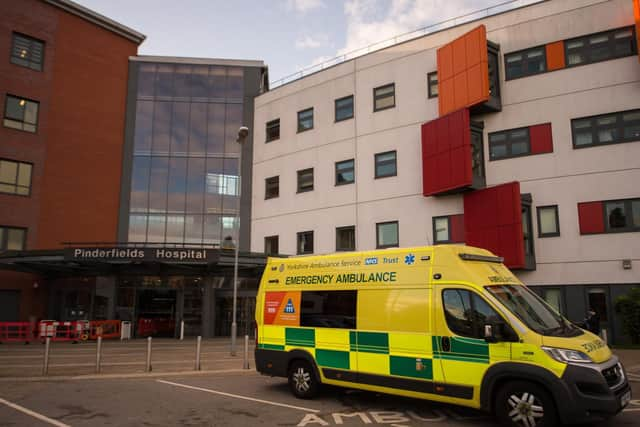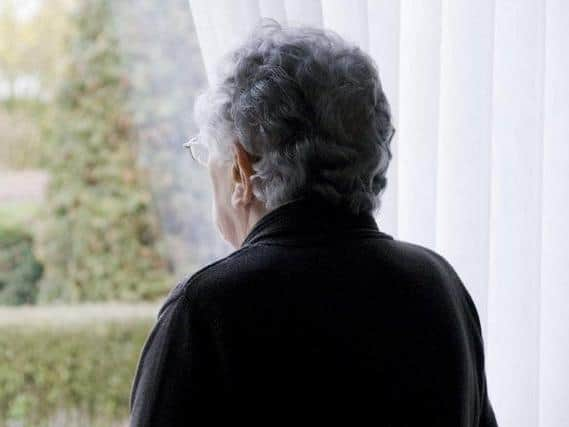Six Covid deaths recorded at Yorkshire hospitals as Government tells vulnerable people there is no need to shield yet
One patient died at Hull University Teaching Hospitals NHS Foundation Trust, one died at The Rotherham NHS Foundation Trust and another died at Sheffield Teaching Hospitals NHS Foundation Trust.
Three people died at Mid Yorkshire Hospitals NHS Trust.
A further 81 people who tested positive for coronavirus have died in hospital elsewhere in England, bringing the total number of confirmed deaths reported in hospitals to 30,594.


Advertisement
Hide AdAdvertisement
Hide AdIt comes as the Government tells the two million people who shielded during the height of the pandemic that they do not yet need to shield again.
New advice has been published on what people who shielded previously should do depending on the Covid alert level in their area.
But the move triggered a backlash among some charities, which said vulnerable people may feel forced to go to work.
The Government said none of the alert levels in place in England will automatically trigger a warning to shield again – where people were told to stay home at all times.


Advertisement
Hide AdAdvertisement
Hide AdIt follows concerns that those on the shielded list became extremely isolated during the first wave, with some too fearful to leave their homes for several months.
In the future, those living in the highest risk areas (known as Tier 3 or Covid alert level three) could be advised to adopt formal shielding if necessary, but they would receive a letter setting out the precautions they should take.
In more general “softer” guidance for all those who shielded in the first wave, the Government has said:
– For Covid alert level medium (Tier 1): People should strictly observe social distancing, meet others outside where possible, limit unnecessary journeys on public transport and work from home where possible. People should still go to work and children should still attend school. This is on top of restrictions for everyone to only meet in groups of up to six people.
Advertisement
Hide AdAdvertisement
Hide Ad– For Covid alert level high (Tier 2): People should reduce the number of different people met outside, avoid travel except for essential journeys, work from home where possible and reduce the number of shopping trips made or go at quieter times of the day. People can still go to work if they cannot work from home and children should still attend school. This is on top of restrictions for everyone to not meet other households indoors, unless part of a support bubble, and to only meet in groups of up to six people outdoors.
– For Covid alert level very high (Tier 3): People should work from home, in general stay at home as much as possible, and avoid all but essential travel. People should also significantly reduce shopping trips, and if possible use online delivery or ask people in their household, support bubble or volunteers to collect food and medicines. People in these areas are encouraged to still go outside for exercise, and can still go to school and to work if they cannot work from home.
The Government said all those who shielded previously are already helped by wider protection measures not previously in place when shielding was originally introduced, such as the rule of six and face coverings.
Letters will be sent to all those affected by the new guidance.
Advertisement
Hide AdAdvertisement
Hide AdDeputy chief medical officer for England Dr Jenny Harries said: “Over the last few weeks, we’ve seen a sharp increase in the prevalence of the virus across the country and we know those who are clinically extremely vulnerable are looking for practical advice on how they can carry on their lives while the virus remains in our communities.
“The new system will provide clarity on how best those in this group can keep themselves as safe as possible depending on the rates of transmission in their local area.
“Whilst advisory, I would urge all those affected to follow the guidance wherever they can and to continue to access health services for their medical conditions.
“We will continue to monitor the evidence closely and fine-tune this approach to make sure everyone in this group is clear about the safest way to go about their daily lives, particularly over the coming winter months.”
Advertisement
Hide AdAdvertisement
Hide AdShielding, which was paused at the end of July, aimed to protect those at greatest risk of severe illness and death from Covid-19.
Clinically extremely vulnerable people include those who have had an organ transplant, people with cancer who are undergoing active chemotherapy and those with lung cancer undergoing radical radiotherapy.
People with cancers of the blood or bone marrow such as leukaemia, lymphoma or myeloma are also included, as are those with cancer who are having immunotherapy or other targeted treatments.
Other conditions included are severe respiratory illnesses including all cystic fibrosis, severe asthma and severe chronic obstructive pulmonary disease (COPD).
Advertisement
Hide AdAdvertisement
Hide AdDr Harries has since said that most children do not need to be included on the list.
Gemma Peters, chief executive of Blood Cancer UK, said: “It is completely unacceptable that even in areas where the alert level is very high, the Government expects people with blood cancer who cannot work from home to carry on travelling into work.”
Phillip Anderson, from the MS Society which is part of a coalition of charities supporting clinically vulnerable people, said: “The Prime Minister told us yesterday that Covid-19 is once again ‘spreading among the elderly and vulnerable’.
“Yet today, the new shielding guidance doesn’t amount to a plan to protect the millions of people particularly vulnerable to Covid-19. Instead, it simply confirms there isn’t one.
Advertisement
Hide AdAdvertisement
Hide Ad“In most areas of the country people living with long-term or life-threatening health conditions like multiple sclerosis, cancer, lung conditions and diabetes are expected to protect themselves.
“In the absence of much of the practical support that was in place in the first wave, vulnerable people who have fewer savings, fewer family, or are not able to work from home have no choice but to simply carry on and risk their health.”
Health and Social Care Secretary Matt Hancock said: “Today’s announcement will mean every person most at risk from serious outcomes from the virus will have specific advice targeted to local levels, which they can follow to keep themselves as safe as possible, while ensuring they can also keep as much normality in their lives as possible.”
The new guidance says: “In the future, the Government will only reintroduce formal shielding advice in the very worst affected local areas and for a limited period of time.
Advertisement
Hide AdAdvertisement
Hide Ad“This will only apply to some, but not all, very high alert level areas and will be based on advice from the chief medical officer.
“You are not advised to follow formal shielding advice again unless you receive a new shielding notification advising you to do so.”